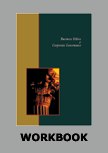Governance Issues at the New York Stock Exchange




|
|
ICMR HOME | Case Studies Collection
Case Details:
Case Code : BECG035
Case Length : 20 Pages
Period : 2003 - 2004
Pub. Date : 2004
Teaching Note :Not Available
Organization : NYSE
Industry : -
Countries : USA
To download Governance Issues at the New York Stock Exchange case study (Case Code:
BECG035) click on the button below, and select the case from the list of available cases:

Price:
For delivery in electronic format: Rs. 500 ;
For delivery through courier (within India): Rs. 500 + Rs. 25 for Shipping & Handling Charges
»
Business Ethics Case Studies
» Case Studies Collection
» ICMR Home
» Short Case Studies
» View Detailed Pricing Info
» How To Order This Case
» Business Case Studies
» Case Studies by Area
» Case Studies by Industry
» Case Studies by Company

Please note:
This case study was compiled from published sources, and is intended to be used as a basis for class discussion. It is not intended to illustrate either effective or ineffective handling of a management situation. Nor is it a primary information source.
|
|
<< Previous
Background NoteThe history of the NYSE dates back to 1792 when the Buttonwood Agreement was signed by 24 New York-based stockbrokers and merchants. The agreement facilitated trading in securities between the signatories on a commission basis.
|
In 1817, a formal organization - the New York Stock & Exchange Board (NYS&EB) was formed by brokers; the board also formulated rules and a constitution for conducting business. By 1824, the NYS&EB's annual trading volume had reached 380,000 shares and by 1835, the daily trading volume had increased 50-fold to 8,500,000 shares. By the 1850s, the NYS&EB had started formulating rules and regulations for listing companies. In 1853, the listing standards were formulated, and these made it mandatory for listed companies to provide complete information about outstanding shares and capital resources. In the late 1850s and early 1860s, the NYS&EB witnessed a turbulent period. In 1857, there was a sharp downward movement in trade due to the collapse of the Ohio Life Insurance & Trust Company.
|
|
The NYS&EB registered a 8-10% price decline in a single trading session and by year-end, the decline stood at 45%. In 1863, the NYS&EB changed its name to the New York Stock Exchange (NYSE).
|
|
In the following year, a Committee on Stock List was appointed to oversee the listing of new securities on the exchange, thus initiating supervision and controlling of listing policies by the NYSE. With the increase in trading volume, the NYSE introduced innovative methods for making trading more convenient. In 1867, for the first time, the stock ticker5 was introduced enabling investors to know the current prices of the stocks. In 1869, the NYSE abolished 'watering stocks'6 and introduced a new rule according to which all shares of companies listed on the NYSE had to be registered with banks or authorized agents. In 1872, the NYSE created the Specialist System (Refer Exhibit I for a note on the Specialist System). By the mid-1880s, the NYSE had also introduced telephone and paging systems to increase trading... |
Excerpts >>
|
|





